This comprehensive guide provides detailed, step-by-step instructions on changing a headlight bulb in a Honda Accord. By following these instructions, you can ensure safety and clarity on the road, especially during nighttime driving or adverse weather conditions.
Maintaining functional headlights is crucial for your safety. Headlights are essential for visibility, allowing you to see the road ahead and be seen by other drivers. A burnt-out bulb can significantly reduce your ability to navigate safely, particularly in low-light conditions. Regularly checking and replacing your headlight bulbs can enhance your driving experience and prevent accidents.
It’s important to recognize the signs of a failing headlight bulb. Common indicators include:
- Dimming lights: If your headlights appear less bright than usual, it’s time for a replacement.
- Flickering: Intermittent lighting can signify an impending failure.
- Burnt-out bulbs: If one of your headlights is completely out, replace it promptly to maintain balanced lighting.
Before you begin the replacement process, gather the following tools:
- Gloves: To avoid getting oils from your skin on the new bulb.
- Screwdriver: Depending on your Accord model, you may need a Phillips or flathead screwdriver.
- Replacement bulb: Ensure you have the correct type for your Honda Accord.
To access the headlight assembly, open the hood of your Honda Accord. Locate the headlight housing, which is usually situated at the front corners of the engine bay. Familiarizing yourself with the layout will make the process easier and more efficient.
Follow these steps to safely remove the old bulb:
- Disconnect the Power Connector: Gently pull the connector away from the bulb to avoid any electrical issues.
- Remove the Bulb Holder: Twist the bulb holder counterclockwise to release it from the assembly.
Installing the new headlight bulb correctly is essential for optimal performance:
- Aligning the Bulb Properly: Ensure the new bulb is aligned correctly in the holder to direct the light beam accurately.
- Reconnecting the Power Connector: Push the connector back onto the bulb firmly to ensure it receives power.
After installation, it’s crucial to test the new bulb. Turn on your headlights to confirm that the new bulb is functioning correctly. Check both high and low beams to ensure proper operation.
Be aware of these common pitfalls:
- Touching the glass: Oils from your skin can shorten the lifespan of the bulb.
- Improper installation: Ensure the bulb is secured to avoid it falling out while driving.
Regular maintenance can prolong the life of your headlights. Here are some tips:
- Clean the lenses: Use a soft cloth and a mild cleaner to remove dirt and grime.
- Check alignment: Ensure your headlights are properly aligned for maximum visibility.
Identifying reliable sources for purchasing quality replacement bulbs is crucial. Look for auto parts stores, online retailers, or your local Honda dealership to find the right bulb for your Accord.
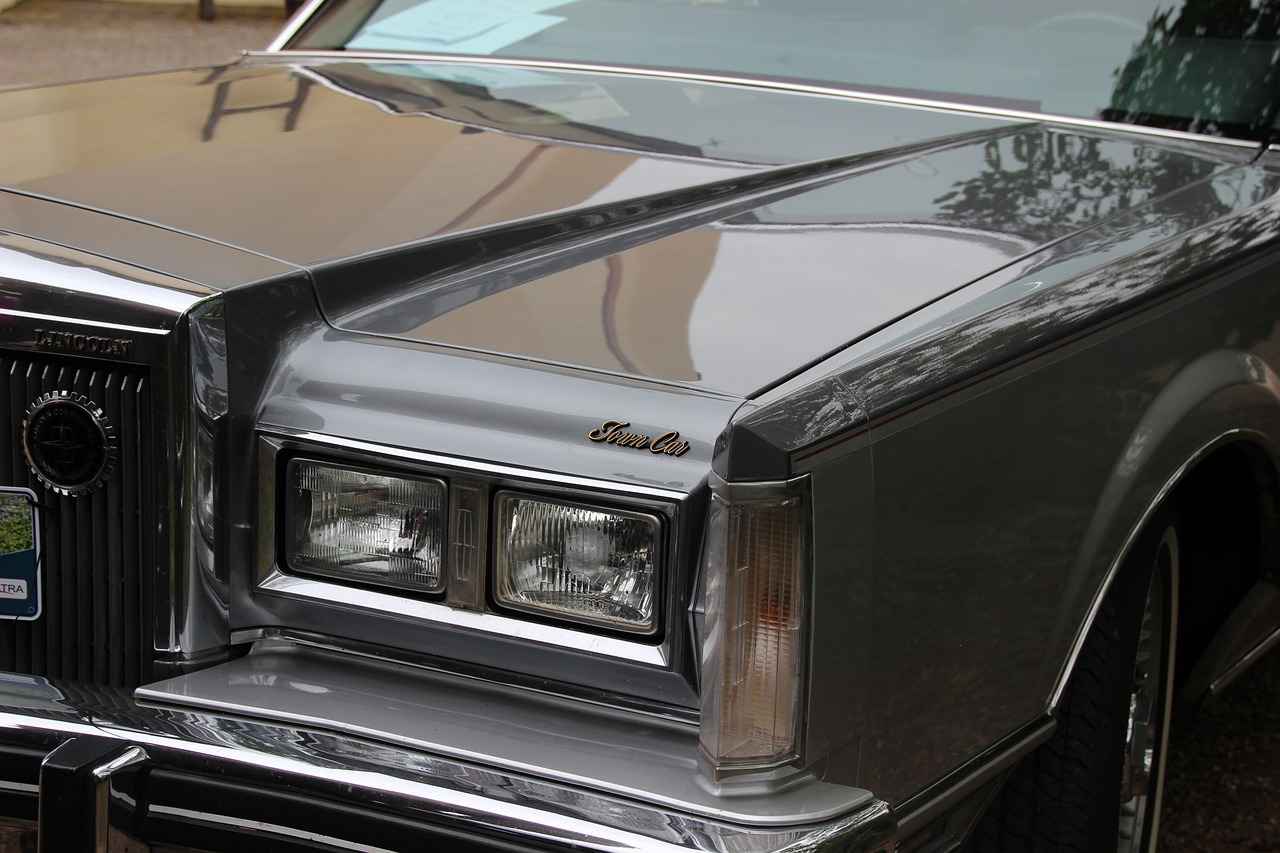
Why Change Your Headlight Bulb?
When it comes to driving, visibility is paramount, especially during nighttime or adverse weather conditions. One of the most critical components that affect visibility is your vehicle’s headlights. Understanding the importance of maintaining functional headlights can significantly enhance safety and visibility, allowing drivers to navigate the roads with confidence.
Headlights are essential for illuminating the road ahead, enabling drivers to see obstacles, pedestrians, and other vehicles. Over time, headlight bulbs can dim or burn out, reducing their effectiveness. Here are several crucial reasons to consider replacing your headlight bulbs:
- Improved Nighttime Visibility: Dimming headlights can severely hinder your ability to see at night. Replacing old bulbs restores brightness, ensuring you can spot hazards well in advance.
- Enhanced Safety: Functional headlights not only benefit the driver but also increase visibility for oncoming traffic. This reduces the risk of accidents caused by poor lighting.
- Weather Conditions: Rain, fog, or snow can further diminish visibility. Bright headlights are essential to cut through these conditions, allowing for safer driving.
- Legal Compliance: Many regions have laws requiring functional headlights. Driving with burnt-out bulbs can lead to fines and penalties.
Being proactive about your headlights can prevent dangerous situations. Here are some signs that indicate it may be time to change your headlight bulbs:
- Dimming Lights: If you notice your headlights are not as bright as they used to be, it may be time for a replacement.
- Flickering: Intermittent flickering can indicate an impending failure.
- One Headlight Out: If one headlight is out, the other may soon follow. It’s wise to replace both bulbs at the same time for balanced illumination.
Regularly maintaining your headlights can have a profound impact on your overall driving safety. Here’s how:
- Regular Checks: Make it a habit to inspect your headlights regularly. Look for signs of wear, such as cloudiness or yellowing of the lens, which can affect light output.
- Cleaning: Dirt and grime can accumulate on headlight lenses, reducing brightness. Regular cleaning can help maintain optimal performance.
- Alignment: Misaligned headlights can cause light to scatter, reducing visibility. Proper alignment ensures the light beam is directed where it is needed most.
In conclusion, understanding the importance of changing your headlight bulbs is vital for maintaining safety on the road. By being aware of the signs of failing bulbs and prioritizing regular maintenance, you can ensure that your headlights provide the necessary visibility to navigate safely, regardless of the time of day or weather conditions.
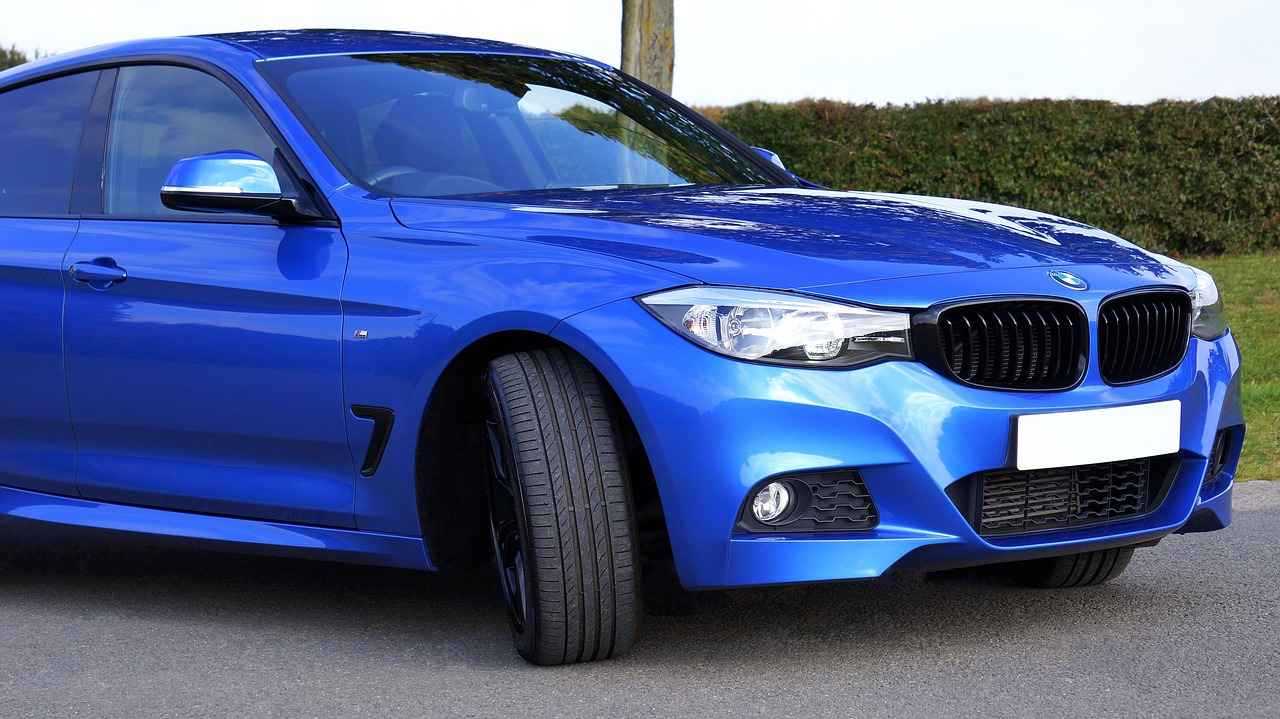
When Should You Replace Your Headlight Bulb?
When it comes to vehicle safety, functional headlights play a crucial role. They not only illuminate the road ahead but also ensure that other drivers can see your vehicle. Thus, knowing when to replace your headlight bulb is essential for safe driving. Headlight bulbs can fail gradually, and recognizing the signs early can help prevent dangerous situations on the road.
One of the first indicators that your headlight bulb may be failing is dimming lights. If you notice that your headlights are not as bright as they used to be, it’s time to consider a replacement. Additionally, flickering lights can also signal an impending failure. Flickering can occur due to a poor connection, but if it persists, the bulb may be nearing the end of its lifespan.
- Burnt-out Bulb: If one of your headlights is completely out, it’s a clear sign that it needs replacing.
- Color Changes: A bulb that has changed color, appearing yellow or blue instead of white, may not provide optimal light output.
- Frequent Burnouts: If you find yourself replacing bulbs frequently, it could indicate an underlying electrical issue.
Ignoring these signs can lead to potential hazards on the road. Dimming or flickering headlights can make it difficult to see, especially in low-light conditions. Moreover, they can reduce your visibility to other drivers, increasing the risk of accidents. Therefore, being proactive about headlight maintenance is vital for your safety.
It’s advisable to check your headlights regularly, ideally every few months. During routine maintenance checks, inspect the brightness and clarity of your headlights. If you notice any signs of failure, replace the bulbs promptly. Additionally, consider checking your headlights after driving in harsh weather conditions, as moisture and debris can affect their performance.
If you observe any of the signs mentioned above, it’s essential to take action. Start by checking the bulb connections to ensure they are secure. If everything appears intact but the lights are still malfunctioning, it’s time to replace the bulb. Refer to your vehicle’s manual for specific instructions on how to change the headlight bulb, or consult a professional mechanic if you are unsure.
Replacing your headlight bulbs in a timely manner not only enhances your visibility but also improves the safety of your vehicle. It ensures that you can see well during night drives and adverse weather conditions, such as rain or fog. Furthermore, it prevents you from receiving fines for having non-functional headlights, which can be a hassle and an unnecessary expense.
In summary, being aware of the signs of a failing headlight bulb, such as dimming or flickering lights, is crucial for maintaining safety on the road. Regular checks and timely replacements can make a significant difference in your driving experience. Stay vigilant and prioritize headlight maintenance to ensure safe travels.
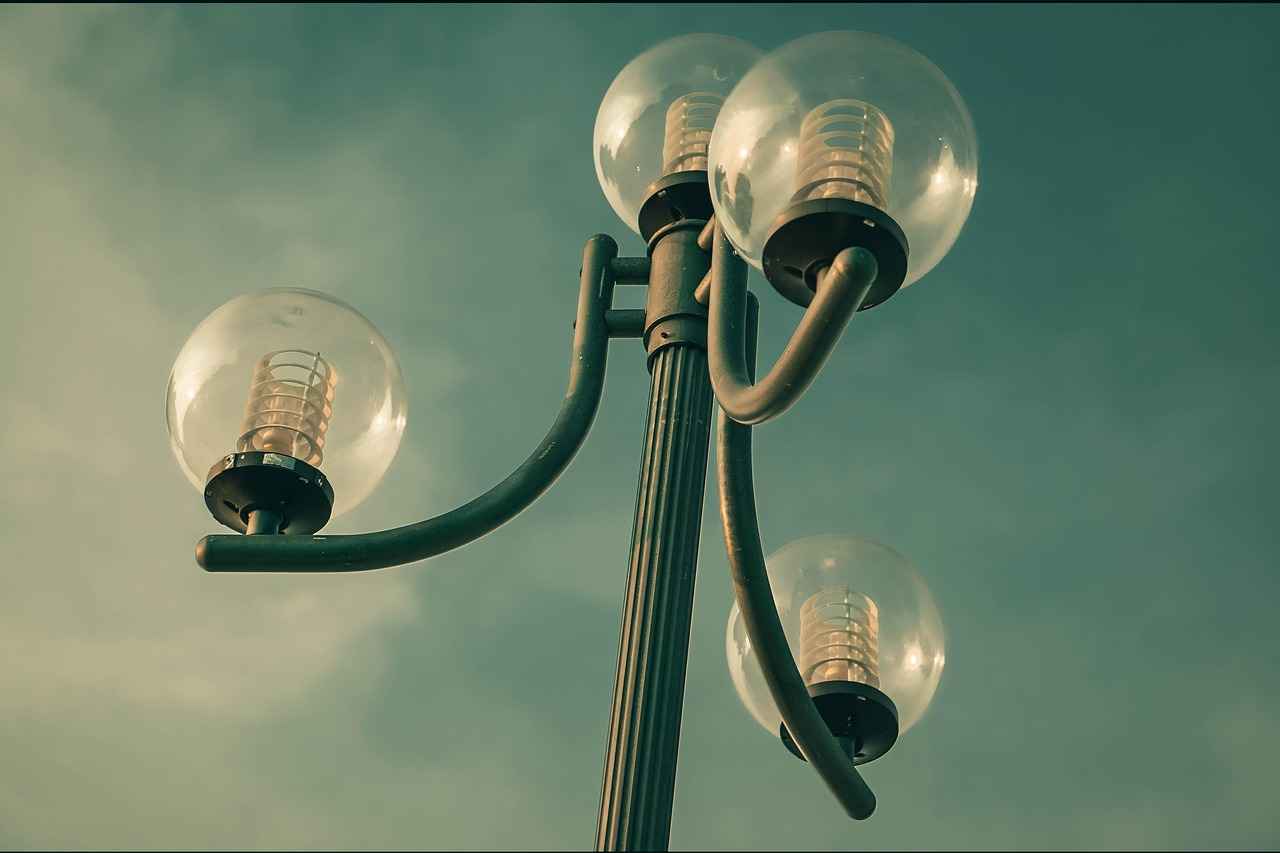
What Tools Do You Need to Change a Headlight Bulb?
Changing a headlight bulb in your Honda Accord is a straightforward task that can save you time and money. However, having the right tools on hand is crucial for a smooth and efficient process. Below, we outline the essential tools you will need, along with some additional tips to streamline your headlight bulb replacement.
- Gloves: Wearing gloves is essential to prevent oils from your skin from transferring to the new bulb, which can cause it to burn out prematurely.
- Screwdriver: A flathead or Phillips screwdriver may be required to remove any screws or clips that hold the headlight assembly in place.
- Replacement Bulb: Ensure you have the correct replacement bulb for your specific Honda Accord model. Refer to your vehicle’s manual for the exact specifications.
- Towel or Cloth: A soft cloth can be used to clean the headlight assembly and ensure a secure fit for the new bulb.
- Flashlight: Having a flashlight can be helpful for illuminating the workspace, especially if you are working in low light conditions.
Gathering the right tools, such as gloves, a screwdriver, and the correct replacement bulb, can make the process smoother and more efficient. Not only does it save time, but it also minimizes the risk of damaging your vehicle. Here’s why each tool is essential:
- Gloves: They protect the bulb from moisture and dirt, which can impair its performance.
- Screwdriver: This tool is necessary for accessing the headlight assembly, allowing you to remove it without damaging surrounding components.
- Replacement Bulb: Using the correct bulb ensures that your headlights function properly, providing optimal visibility.
- Towel or Cloth: Cleaning the area around the bulb socket helps to ensure that no debris interferes with the new installation.
- Flashlight: This is particularly useful for inspecting the headlight assembly and ensuring that all connections are secure.
In addition to gathering the essential tools, here are some tips to enhance your headlight bulb replacement experience:
- Read the Manual: Always refer to your vehicle’s manual for specific instructions regarding headlight replacement.
- Work in a Well-Lit Area: Ensure you are working in a space that is well-lit to avoid any mistakes during the replacement process.
- Double-Check Everything: Before closing the hood, double-check that the bulb is securely in place and that all connectors are reattached properly.
By preparing adequately and using the right tools, you can change your headlight bulb efficiently and effectively, ensuring your Honda Accord remains safe and roadworthy.

How to Access the Headlight Assembly?
Accessing the headlight assembly in your Honda Accord is a fundamental step in ensuring that you can replace your headlight bulb efficiently. Understanding this process not only saves you time but also enhances your vehicle’s safety by ensuring that your headlights are functioning correctly. This guide will walk you through the necessary steps to open the hood and locate the headlight assembly with ease.
Being able to access the headlight assembly is crucial for anyone looking to maintain their vehicle. Headlights are essential for visibility during nighttime driving and in poor weather conditions. If your headlights are not functioning properly, it can lead to dangerous driving situations. Therefore, knowing how to reach the assembly is a key skill for any Honda Accord owner.
- Locate the Hood Release Lever: Inside your vehicle, typically on the lower left side of the dashboard, you will find the hood release lever. Pull this lever to unlock the hood.
- Secure the Hood: Once the hood is released, move to the front of the vehicle. Find the safety latch, usually located in the center of the hood. Slide or lift this latch to fully open the hood.
- Use a Prop Rod: If your model has a prop rod, make sure to secure the hood in place to prevent it from falling while you work.
Once the hood is open, the next step is to locate the headlight assembly. This is generally situated at the front corners of the vehicle. Here’s how to identify it:
- Identify the Headlight Housing: The headlight assembly is usually a large, transparent lens that houses the bulb. It may have a plastic or metal casing surrounding it.
- Check for Access Panels: Some Honda Accord models may have access panels that can be removed for easier bulb replacement. Look for clips or screws that may need to be undone.
After locating the headlight assembly, you can proceed to replace the bulb. It’s important to follow the specific steps for your model, as they may vary slightly. Make sure to have your replacement bulb ready, along with any necessary tools, such as a screwdriver or pliers.
- Consult Your Owner’s Manual: Always refer to your Honda Accord owner’s manual for model-specific instructions.
- Wear Gloves: To avoid getting oils from your skin on the new bulb, which can cause it to burn out prematurely, wear gloves during the replacement process.
- Double-Check Connections: After replacing the bulb, ensure that all connections are secure before closing the hood.
By following these steps, you will be well-equipped to access the headlight assembly in your Honda Accord. This knowledge not only empowers you to perform maintenance tasks but also enhances your driving safety. Remember that regular checks and timely replacements can significantly improve your vehicle’s performance on the road.
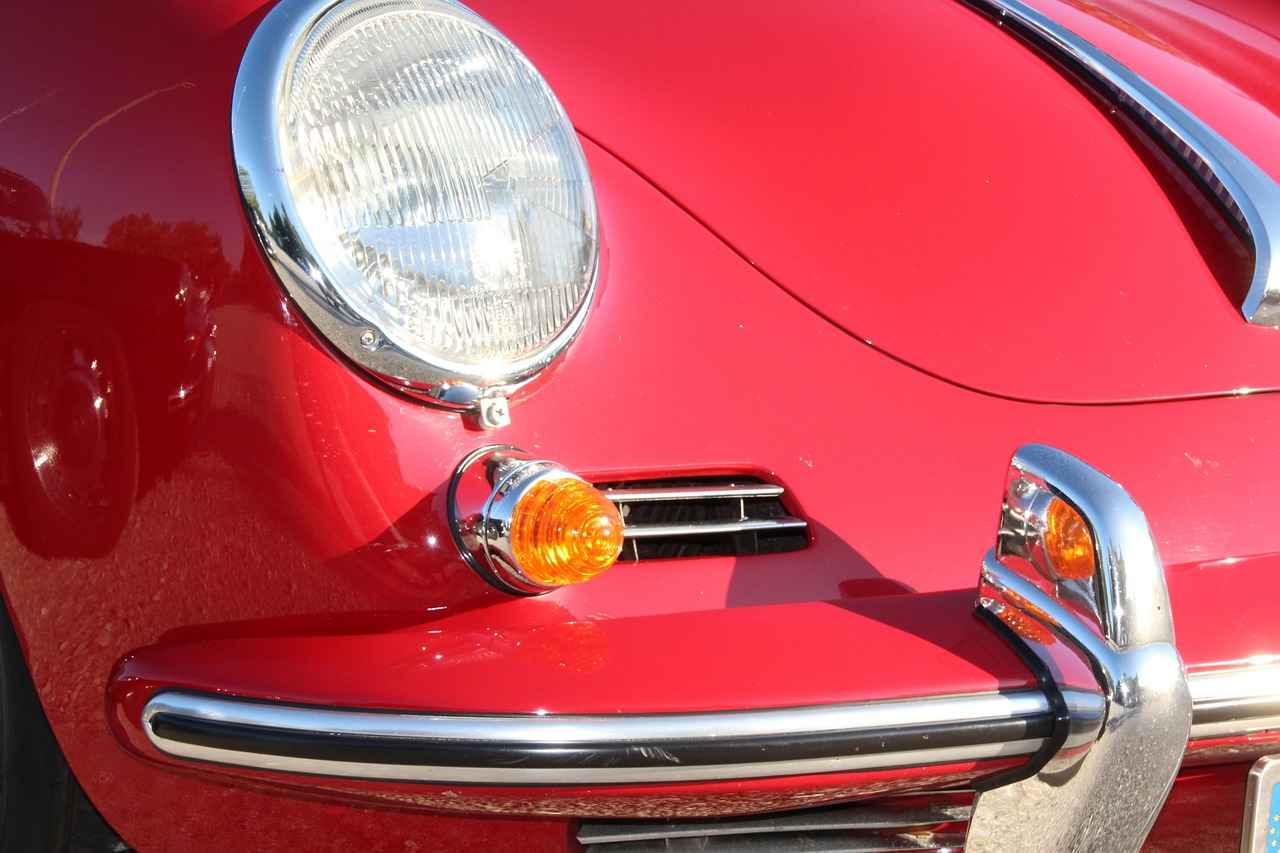
Steps to Remove the Old Headlight Bulb
Changing a headlight bulb in your Honda Accord is a straightforward task, but it requires careful attention to detail. Following specific steps to safely remove the old bulb is essential to prevent damage to the headlight assembly and ensure a proper fit for the new bulb. In this section, we will outline the critical steps involved in removing the old headlight bulb.
- Gather Your Tools: Before beginning the removal process, ensure you have the necessary tools at hand. You will typically need gloves, a screwdriver, and a replacement headlight bulb.
- Turn Off the Engine: For safety, make sure your vehicle is turned off, and the keys are removed from the ignition. This prevents any electrical issues and ensures your safety while working.
- Open the Hood: Locate the hood release lever inside your vehicle and open the hood. Secure it with the prop rod to prevent it from falling while you work.
- Locate the Headlight Assembly: Identify the headlight assembly where the bulb is housed. This is typically located at the front of the vehicle on either side.
- Disconnect the Power Connector: Carefully unplug the power connector from the back of the old bulb. This step is crucial as it prevents any electrical short circuits that could occur during removal.
- Remove the Bulb Holder: Depending on your Honda Accord model, you may need to twist or pull the bulb holder to release it from the assembly. Be gentle to avoid damaging any surrounding components.
- Take Out the Old Bulb: Once the holder is free, gently pull the old bulb out of the socket. Avoid using excessive force, as this could break the bulb and create sharp fragments.
- Inspect the Assembly: Before installing the new bulb, take a moment to inspect the headlight assembly for any signs of wear or damage. Cleaning any debris or dirt can also help ensure optimal performance for the new bulb.
By following these steps carefully, you can ensure that the old headlight bulb is removed safely and efficiently. This attention to detail not only protects your vehicle’s headlight assembly but also sets the stage for a successful installation of the new bulb. Remember, a properly functioning headlight is critical for your safety on the road, especially during nighttime driving or adverse weather conditions.
Disconnecting the Power Connector
is a crucial step in the process of changing a headlight bulb in your Honda Accord. This action not only ensures your safety but also protects the vehicle’s electrical system from potential damage during the replacement process. Understanding the proper technique for disconnecting the power connector can save you from electrical issues that may arise if the procedure is not followed correctly.
Before you begin, it’s essential to take a few safety precautions. Make sure the vehicle is turned off, and the keys are removed from the ignition. This will help prevent any accidental electrical surges or shocks while you work on the headlight assembly.
To start, locate the headlight assembly in your Honda Accord. Depending on the model year, you may need to access the assembly from either the front or the rear. Once you have located the assembly, identify the power connector that attaches to the back of the bulb. This connector is typically a plastic piece with wires leading to it.
- Grip the Connector: Firmly grasp the power connector with your fingers. It’s important to hold it securely to avoid any slipping.
- Press the Release Tab: Most connectors have a small release tab that you need to press down on. This tab is designed to lock the connector in place and must be disengaged before you can remove it.
- Pull Gently: While pressing the release tab, gently pull the connector away from the bulb. Avoid using excessive force, as this could damage the wires or the connector itself.
Once the power connector is successfully disconnected, you can proceed to remove the bulb holder and replace the old bulb with a new one. Remember, handling the new bulb with care is vital. Touching the glass part of the bulb with your fingers can create hot spots that may lead to premature failure.
After the new bulb is installed, you will need to reconnect the power connector. Ensure that it clicks securely into place, as this will guarantee that the bulb receives the necessary power to function correctly. A loose connection can lead to flickering lights or complete failure of the headlight.
In summary, understanding how to properly disconnect the power connector is essential for anyone looking to change their headlight bulb. This simple yet crucial step can prevent electrical issues and ensure a smooth replacement process. By following these guidelines, you can enhance your safety on the road and maintain the functionality of your Honda Accord’s lighting system.
Removing the Bulb Holder
Changing the headlight bulb in your Honda Accord is an essential maintenance task that ensures your vehicle remains safe and visible on the road. One of the crucial steps in this process is . This step requires careful attention to avoid damaging surrounding components. In this section, we will delve into the methods and precautions necessary for effectively removing the bulb holder.
When changing a headlight bulb, the bulb holder serves as a protective casing that secures the bulb in place. Removing it properly is vital for accessing the bulb without risking damage to the headlight assembly. Improper handling can lead to cracks or breaks in the assembly, which could necessitate costly repairs.
- Prepare Your Workspace: Before you start, ensure that the area around the headlight is clean and well-lit. This will help you see any small components clearly.
- Disconnect the Power: Always start by disconnecting the power connector from the bulb. This prevents any electrical mishaps while you work.
- Locate the Bulb Holder: Identify the bulb holder within the headlight assembly. It’s usually a circular or rectangular component that houses the bulb.
To remove the bulb holder, follow these steps:
- Twist and Pull: Most bulb holders are designed to twist out. Gently twist the holder counterclockwise while pulling it straight out. Avoid using excessive force, as this could damage the surrounding plastic.
- Inspect for Clips: Some models may have clips securing the holder. If you encounter resistance, check for any clips that may need to be released before pulling the holder out.
- Handle with Care: Always handle the bulb holder and the headlight assembly with care. If you notice any cracks or wear, consider replacing the entire assembly to ensure optimal performance.
- Forcing the Holder: Never force the bulb holder out. If it does not come out easily, double-check for any clips or screws that may be holding it in place.
- Touching the Bulb Glass: When handling the new bulb, avoid touching the glass with your fingers, as oils from your skin can reduce its lifespan.
- Neglecting to Disconnect Power: Always remember to disconnect the power before attempting to remove the bulb holder to prevent electrical issues.
By following the proper steps to remove the bulb holder, you can ensure that the process of changing your headlight bulb is smooth and damage-free. Always take your time and double-check your work to maintain the integrity of the headlight assembly and ensure your vehicle remains safe on the road. With the right approach, replacing your headlight bulb can be a straightforward task that enhances your driving experience.
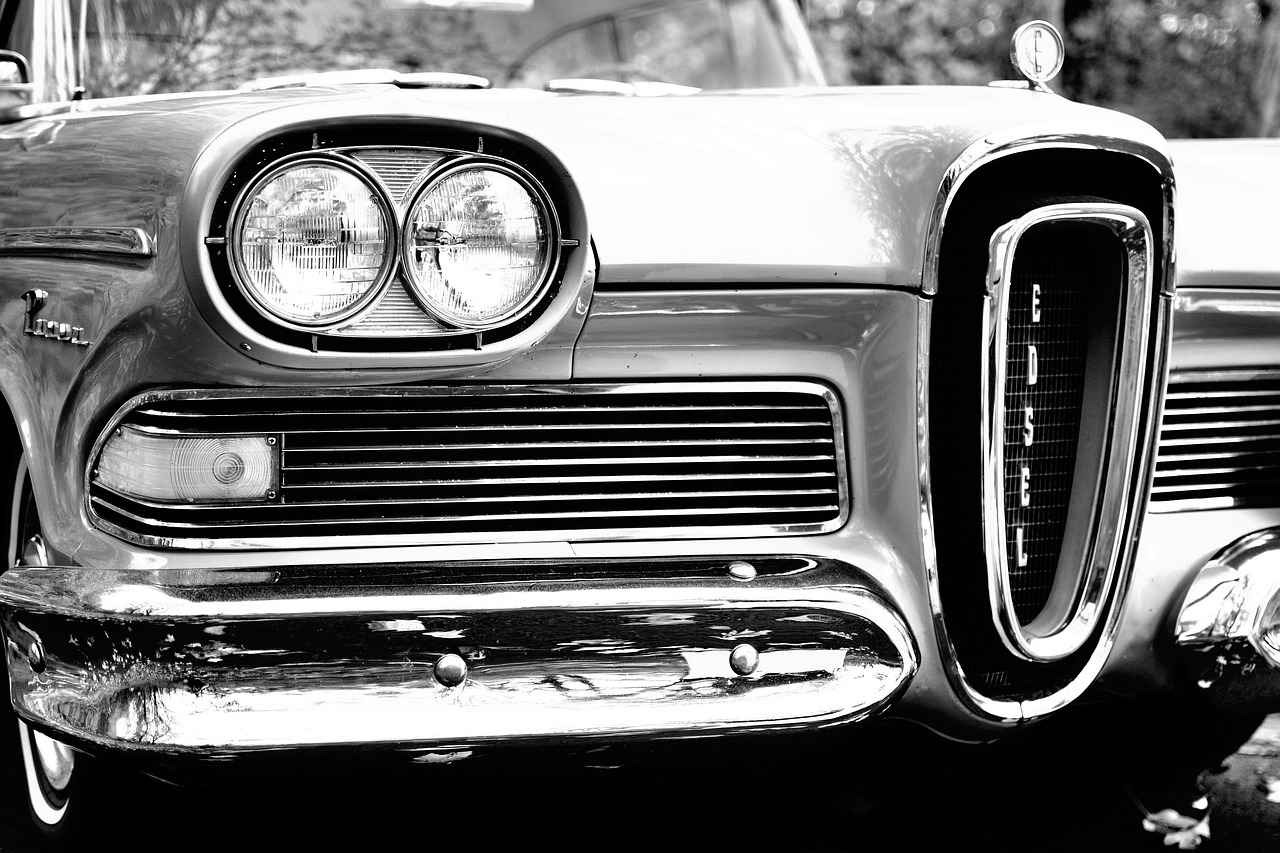
How to Install the New Headlight Bulb?
Replacing a headlight bulb is a routine maintenance task that every Honda Accord owner should be familiar with. Proper installation of the new headlight bulb is crucial not only for optimal performance but also for ensuring the longevity of the bulb itself. In this section, we will explore the steps to install a new headlight bulb, emphasizing the importance of doing it correctly to enhance your vehicle’s safety features.
Installing the new headlight bulb correctly is essential for several reasons:
- Safety: Properly functioning headlights are vital for visibility during night driving and in poor weather conditions.
- Longevity: Correct installation can prevent premature failure of the bulb, saving you time and money on replacements.
- Performance: A well-installed bulb ensures that the light beam is directed correctly, improving overall visibility on the road.
Follow these steps carefully to ensure a successful installation:
- Prepare Your Workspace: Start by ensuring your vehicle is parked on a level surface and the engine is turned off. Allow the headlights to cool down if they were recently in use.
- Access the Headlight Assembly: Open the hood of your Honda Accord and locate the headlight assembly. This may require removing a cover or panel, depending on your vehicle model.
- Align the New Bulb: Take your new headlight bulb and carefully align it with the socket. Ensure that the alignment tabs fit into their respective grooves to avoid damaging the bulb or assembly.
- Insert the Bulb: Gently push the bulb into the socket until it clicks into place. Avoid touching the glass part of the bulb with your fingers, as oils from your skin can cause the bulb to fail prematurely.
- Reconnect the Power Connector: Securely reconnect the power connector to the bulb. Ensure it snaps into place to prevent any electrical issues.
Once the installation is complete, it’s vital to test the new headlight bulb:
- Turn on your vehicle and activate the headlights.
- Check for proper illumination and alignment of the light beam.
- Ensure that both the low beam and high beam functions work correctly.
To ensure a smooth installation process, be aware of these common mistakes:
- Touching the Bulb: Always handle the new bulb by its base to avoid contamination.
- Improper Alignment: Ensure that the bulb is aligned correctly before securing it in place.
- Neglecting to Test: Always test the new bulb after installation to confirm that it works properly.
To prolong the lifespan of your headlights, consider these maintenance tips:
- Regular Cleaning: Clean the headlight lenses periodically to remove dirt and grime.
- Check Alignment: Ensure that your headlights are properly aligned to provide optimal visibility.
- Inspect for Damage: Regularly check for any signs of wear or damage to the headlight assembly.
By following these guidelines, you can ensure that your new headlight bulb is installed correctly, enhancing both the safety and performance of your Honda Accord.
Aligning the Bulb Properly
When it comes to changing a headlight bulb in your Honda Accord, one of the most crucial steps is . This process is essential, as it ensures that the light beam is directed accurately, providing maximum visibility on the road. A misaligned bulb can lead to inadequate illumination, which could compromise your safety as well as that of other drivers.
Proper alignment of your headlight bulb is vital for several reasons:
- Enhanced Visibility: Correctly aligned headlights illuminate the road ahead effectively, allowing you to see obstacles, signs, and pedestrians clearly.
- Safety for Other Drivers: When headlights are misaligned, they can blind oncoming traffic, creating a hazardous situation for everyone on the road.
- Legal Compliance: Many regions have laws regarding headlight alignment. Ensuring your headlights are properly aligned can help you avoid fines and ensure compliance with local regulations.
To achieve the correct alignment of your new headlight bulb, follow these steps:
- Install the Bulb Carefully: When placing the new bulb into the headlight assembly, ensure it is seated firmly in its socket. A loose bulb can easily become misaligned.
- Adjust the Headlight Assembly: Most headlight assemblies have adjustment screws. Use a screwdriver to fine-tune the angle of the headlight beam. Typically, the beam should be aimed slightly downward and to the right to avoid blinding other drivers.
- Test the Alignment: After making adjustments, turn on your headlights and park your vehicle about 25 feet away from a flat wall. Check where the light beam hits the wall. The cutoff line of the beam should be at or just below the height of your headlights.
Even with careful installation, several factors can lead to misalignment:
- Improper Installation: If the bulb is not inserted correctly, it can easily shift out of place.
- Wear and Tear: Over time, components of the headlight assembly can become loose or damaged, affecting alignment.
- Vehicle Load: The weight of passengers or cargo can alter the vehicle’s height, changing the angle of the headlights.
To ensure your headlights remain properly aligned, consider the following maintenance tips:
- Periodic Checks: Regularly check the alignment of your headlights, especially after any front-end collisions or suspension work.
- Cleaning Headlights: Dirt and grime can obscure the light beam. Keep your headlights clean for optimal performance.
- Consult a Professional: If you’re unsure about the alignment or encounter persistent issues, consult a professional mechanic for assistance.
In conclusion, aligning the headlight bulb properly is a fundamental step in ensuring your vehicle’s safety and functionality. By following the outlined steps and maintaining your headlights, you can enhance visibility and contribute to safer driving conditions for everyone on the road.
Reconnecting the Power Connector
When changing a headlight bulb in your Honda Accord, one of the critical steps is . This process is essential for ensuring that the new bulb receives adequate power and functions as intended. A securely connected power source not only guarantees illumination but also prevents potential electrical issues that may arise from loose connections.
After installing a new headlight bulb, the power connector must be reattached correctly. A loose or improperly connected power connector can lead to intermittent lighting or complete failure of the headlight. This situation can pose serious safety risks while driving, especially at night or in low visibility conditions. Therefore, ensuring a firm connection is paramount for reliable headlight performance.
- Inspect the Connector: Before reconnecting, examine the power connector for any signs of wear or damage. A damaged connector can lead to poor electrical contact.
- Align the Connector: Position the connector so that it aligns correctly with the bulb’s terminals. Make sure not to force it, as this could cause damage.
- Press Firmly: Once aligned, push the connector firmly into place until you hear or feel it click. This click indicates that the connector is secure.
- Check for Stability: After reconnecting, gently tug on the connector to ensure it is firmly attached. A stable connection is vital for the bulb’s operation.
While reconnecting the power connector, several common issues may arise:
- Misalignment: If the connector is not aligned properly, it may not connect, leading to a non-functioning bulb.
- Corrosion: Over time, connectors can corrode, which affects conductivity. Ensure the terminals are clean and free from rust.
- Loose Fit: A connector that isn’t firmly attached can lead to flickering lights. Always double-check the connection after installation.
After securely reconnecting the power connector, it’s essential to test the new headlight bulb. Start your vehicle and turn on the headlights. Observe whether the light shines brightly and consistently. If the bulb flickers or does not light up, double-check the power connector and ensure it is properly secured. Additionally, inspect the bulb itself to confirm it is functioning correctly.
To prevent issues with your headlight bulb in the future, consider the following maintenance tips:
- Regular Inspections: Periodically check the power connectors and bulbs for signs of wear or damage.
- Keep the Area Clean: Ensure that the headlight assembly and connectors are free from dirt and moisture, which can cause corrosion.
- Use Quality Bulbs: Invest in high-quality replacement bulbs that are compatible with your Honda Accord to ensure optimal performance.
In summary, reconnecting the power connector securely is vital to ensure that your new headlight bulb receives power and functions correctly. Paying attention to this step can significantly enhance your vehicle’s safety and performance on the road.

Testing the New Headlight Bulb
After successfully installing your new headlight bulb, it is crucial to perform a thorough test to ensure that it operates correctly. This step is not just about confirming that the light turns on; it involves checking for brightness, alignment, and safety compliance. Proper testing guarantees that your vehicle is equipped to handle various driving conditions, especially during nighttime or inclement weather.
To begin the testing process, first, turn on your vehicle’s ignition and activate the headlights. Observe the following:
- Brightness: The new bulb should emit a strong, clear light. If the light appears dim or flickering, this may indicate a problem with the installation or the bulb itself.
- Alignment: Ensure that the headlight beam is properly aligned. The light should not be directed too high or too low, as this can impair visibility and dazzle oncoming drivers.
- Functionality: Test both low and high beams, if applicable, to verify that both settings work effectively.
If the new bulb fails to meet these criteria, it is important to troubleshoot the issue. Here are some common problems and their solutions:
| Problem | Possible Cause | Solution |
|---|---|---|
| Dim light | Improper installation | Check the bulb seating and ensure it is securely connected. |
| Flickering light | Loose connection | Inspect the power connector for a secure fit. |
| No light | Burnt-out bulb or electrical issue | Replace the bulb or check the vehicle’s fuses. |
Additionally, it is advisable to conduct a visual inspection of the headlight assembly. Look for any signs of moisture or damage, as these can affect the performance of the new bulb. If moisture is present, it may indicate a seal issue that needs addressing to prevent further complications.
Once you have confirmed that the new headlight bulb is functioning correctly, remember to regularly check the headlights during routine maintenance. Keeping your headlights clean and properly aligned can significantly enhance visibility and safety on the road.
In summary, testing the new headlight bulb is an essential step in ensuring that your vehicle remains safe and reliable. By following these guidelines, you can confidently drive knowing that your headlights are in optimal condition.
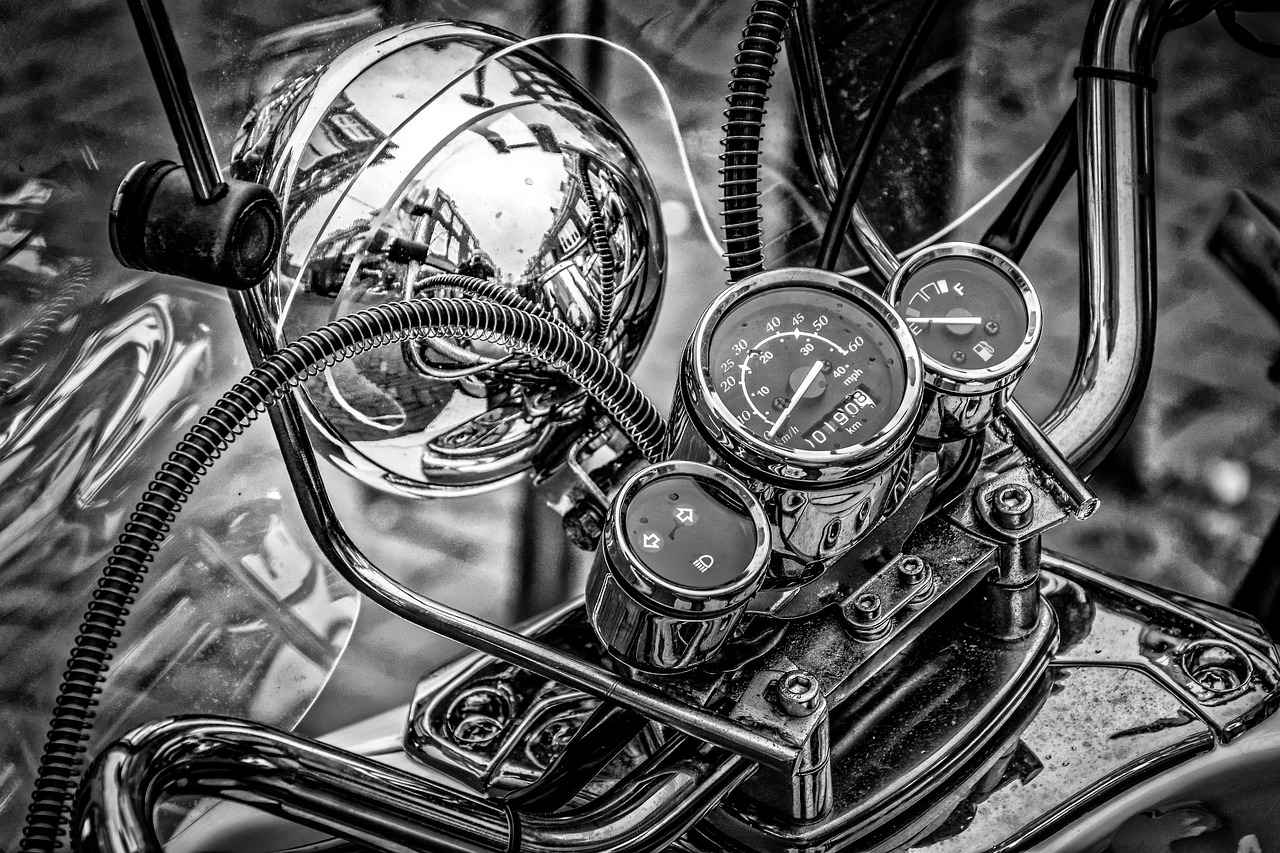
Common Mistakes to Avoid When Changing a Headlight Bulb
Changing a headlight bulb in your Honda Accord can seem like a straightforward task, but there are several common mistakes that many drivers make. Avoiding these pitfalls will not only ensure a smooth replacement process but also enhance your vehicle’s safety and performance on the road.
Understanding the significance of proper bulb replacement is crucial. A well-functioning headlight is essential for visibility, especially during night driving or adverse weather conditions. Mistakes during installation can lead to premature bulb failure or even electrical issues.
One of the most critical mistakes is touching the glass part of the new bulb with your fingers. This can leave oils from your skin on the bulb’s surface, which may cause it to overheat and burn out quickly. Instead, always use a clean cloth or wear gloves when handling the bulb.
Failing to secure the headlight assembly correctly can lead to misalignment, resulting in poor light projection. Make sure to follow the manufacturer’s instructions for securing the assembly and double-check that everything is tight before closing the hood.
Another common error is neglecting to check the electrical connections. Ensure that the power connector is firmly attached to the new bulb. A loose connection can result in flickering lights or complete failure of the headlight, posing a safety hazard.
Using an incompatible bulb type can lead to various issues, including improper fit and function. Always consult your Honda Accord’s manual or a reliable source to confirm you are purchasing the correct replacement bulb.
After installation, it’s essential to test the new bulb. Failing to do so can leave you unaware of any issues that may need addressing. Turn on your headlights and check for proper functionality before you hit the road.
Lastly, many drivers overlook the importance of regular maintenance. Clean your headlights periodically to remove dirt and debris that can obstruct light output. Additionally, check the alignment to ensure the beams are directed correctly.
- Always consult your vehicle’s manual for specific instructions.
- Keep a flashlight handy for better visibility during the replacement process.
- Consider replacing both bulbs at the same time to maintain balanced lighting.
- Refrain from using excessive force when removing or securing components.
By being aware of these common mistakes and taking the necessary precautions, you can ensure a successful headlight bulb replacement that enhances your driving safety. Remember, a little attention to detail goes a long way in maintaining your vehicle.

Maintenance Tips for Headlights
Headlights are crucial for safe driving, especially during nighttime or adverse weather conditions. Regular maintenance of your headlights not only extends their lifespan but also significantly enhances your visibility on the road. Below are some essential that every vehicle owner should consider.
Maintaining your headlights is vital for several reasons:
- Safety: Properly functioning headlights ensure you can see and be seen by other drivers, reducing the risk of accidents.
- Longevity: Routine care can prevent premature burnout of bulbs, saving you money in the long run.
- Visibility: Clean and well-aligned headlights provide optimal illumination, which is particularly important in low-light conditions.
It is advisable to check your headlights at least once a month. During these checks, look for signs of wear and tear, such as:
- Dimming or flickering lights
- Cloudy or yellowed lens covers
- Misalignment of the headlight beams
Over time, your headlight lenses can become cloudy or discolored due to exposure to UV rays and road debris. Here’s how to clean them:
1. Gather materials: You’ll need a microfiber cloth, glass cleaner, and a headlight restoration kit (if necessary).2. Clean the lens: Spray the glass cleaner on the lens and wipe it with the microfiber cloth.3. Use restoration kit: If the lens is still cloudy, follow the instructions on the restoration kit for best results.
Misaligned headlights can impair visibility and dazzle oncoming drivers. To check alignment:
- Park your vehicle on a level surface about 25 feet away from a wall.
- Turn on your headlights and observe the beam pattern on the wall.
- Adjust the headlights so that the beams are level and centered.
Burnt-out bulbs should be replaced immediately to maintain safety. To replace a bulb:
- Consult your vehicle manual for specific instructions.
- Always use the recommended type of bulb to ensure compatibility.
Here are some further tips to keep your headlights in top condition:
- Inspect Wiring: Regularly check the wiring connected to the headlights for any signs of fraying or damage.
- Use Protective Covers: Consider using headlight covers to protect against debris and UV damage.
- Professional Inspection: Schedule a professional inspection if you notice persistent issues with your headlights.
By following these , you can ensure that your vehicle remains safe and roadworthy. Proper care not only enhances your driving experience but also contributes to overall road safety.

Where to Buy Replacement Headlight Bulbs?
When it comes to maintaining your Honda Accord, ensuring that you have quality replacement headlight bulbs is essential for safety and visibility on the road. Identifying reliable sources for purchasing these bulbs can significantly impact the performance of your vehicle’s lighting system. Here are some key considerations to help you find the best replacement bulbs:
Quality replacement bulbs not only provide better illumination but also have a longer lifespan. Poor-quality bulbs can lead to frequent replacements, increased costs, and even potential safety hazards. Therefore, investing in reliable products is crucial.
- Authorized Dealerships: Purchasing bulbs from an authorized Honda dealership ensures that you receive OEM (Original Equipment Manufacturer) parts that are specifically designed for your Accord. This guarantees compatibility and performance.
- Reputable Auto Parts Stores: National chains like AutoZone, O’Reilly Auto Parts, and Advance Auto Parts often stock a variety of headlight bulbs. Look for stores that have knowledgeable staff who can assist you in choosing the right product.
- Online Retailers: Websites such as Amazon, eBay, and RockAuto provide a wide selection of replacement bulbs. Be sure to check customer reviews and ratings to ensure the reliability of the seller and product.
- Specialty Lighting Shops: Shops that specialize in automotive lighting can offer unique options, including high-performance or LED bulbs that enhance visibility. These shops often have experts who can provide guidance based on your specific needs.
When shopping for replacement headlight bulbs, consider the following:
- Brightness and Lumens: Check the lumens rating of the bulb, as higher lumens indicate brighter light output. This is crucial for nighttime driving and adverse weather conditions.
- Bulb Type: Ensure you know the correct bulb type for your Honda Accord. Common types include halogen, HID, and LED. Each has its benefits and drawbacks.
- Warranty: Look for bulbs that come with a warranty, which can be a sign of quality and manufacturer confidence in their product.
- Color Temperature: The color temperature of the bulb affects visibility. A temperature between 4000K and 6000K is often recommended for optimal clarity.
Before making a purchase, it’s wise to verify the quality of the bulbs:
- Brand Reputation: Research brands known for their quality automotive lighting products. Brands like Philips, Osram, and Sylvania have established a reputation for reliability.
- Customer Reviews: Reading reviews can provide insights into the performance and longevity of the bulbs you are considering.
- Certifications: Look for certifications such as DOT (Department of Transportation) approval, which indicates that the bulbs meet safety standards.
In conclusion, finding reliable sources for purchasing quality replacement headlight bulbs is vital for maintaining the safety and functionality of your Honda Accord. By considering authorized dealerships, reputable auto parts stores, and online retailers, you can ensure that you get the best products available. Always pay attention to specifications, quality indicators, and customer feedback. This diligence will not only enhance your driving experience but also ensure that your vehicle remains safe on the road.
Frequently Asked Questions
- How often should I change my headlight bulbs?
It’s generally recommended to replace headlight bulbs every 12 to 24 months, depending on usage. If you notice dimming or flickering, it’s time for a change!
- Can I change a headlight bulb myself?
Absolutely! Changing a headlight bulb is a straightforward process that you can do at home with minimal tools. Just follow the steps in our guide, and you’ll be good to go!
- What type of headlight bulb do I need for my Honda Accord?
Most Honda Accords use halogen bulbs, but it’s best to check your owner’s manual or look at the existing bulb to confirm the exact type needed for your model.
- What should I do if my new headlight bulb doesn’t work?
If your new bulb isn’t lighting up, double-check the power connector and ensure it’s securely attached. If everything looks good, the bulb might be defective, so consider getting a replacement.
- Is it safe to drive with a burnt-out headlight?
Driving with a burnt-out headlight is not safe! It reduces visibility and increases the risk of accidents. Make sure to replace it as soon as possible.



